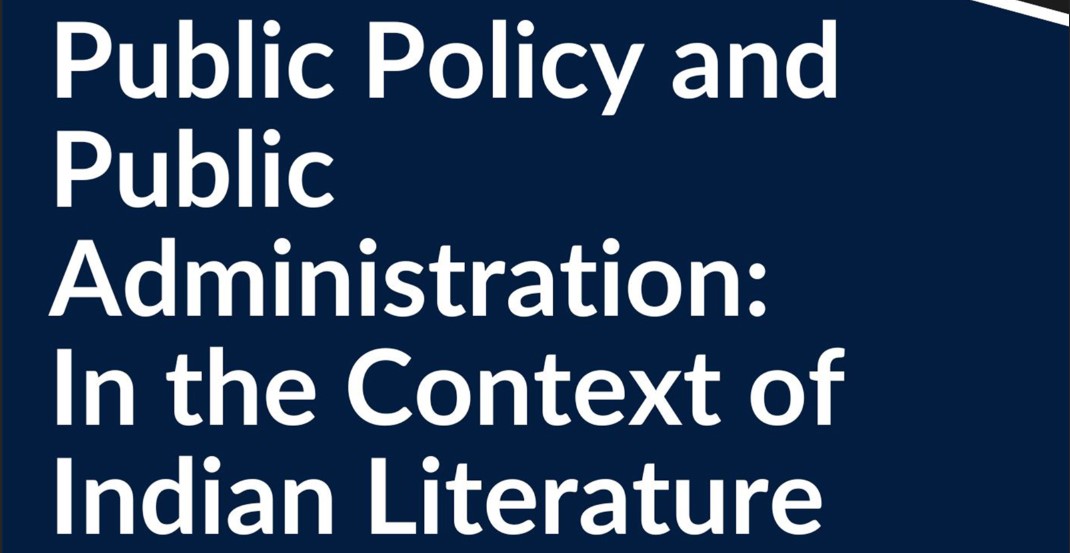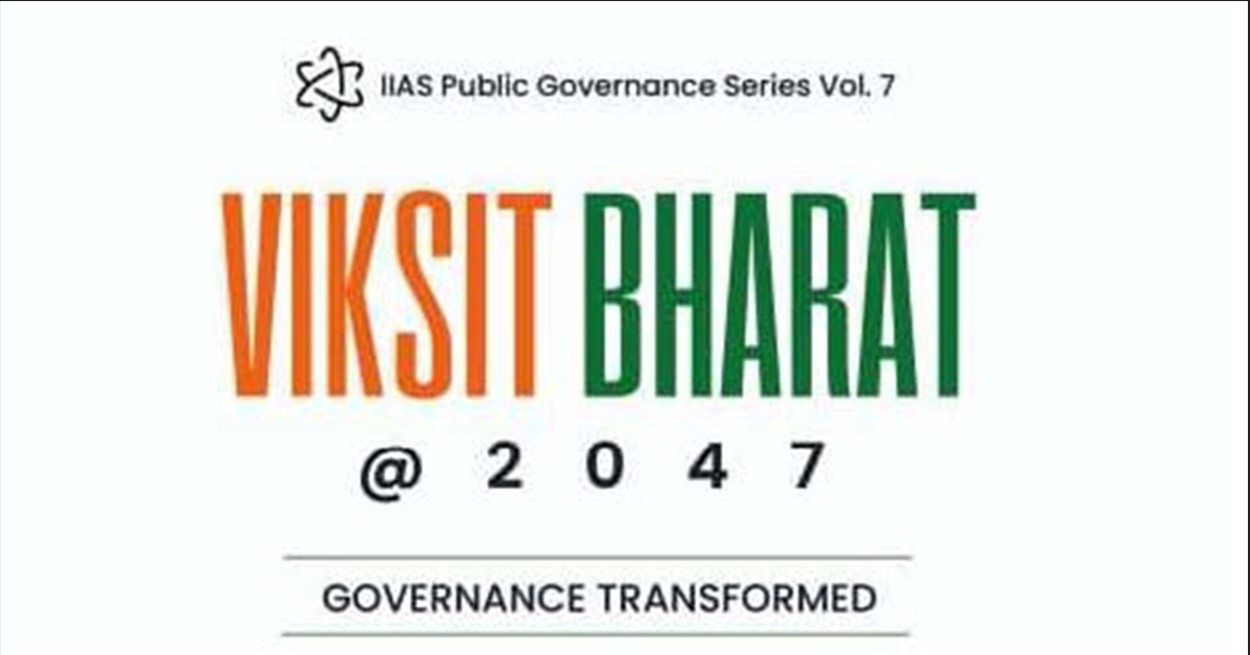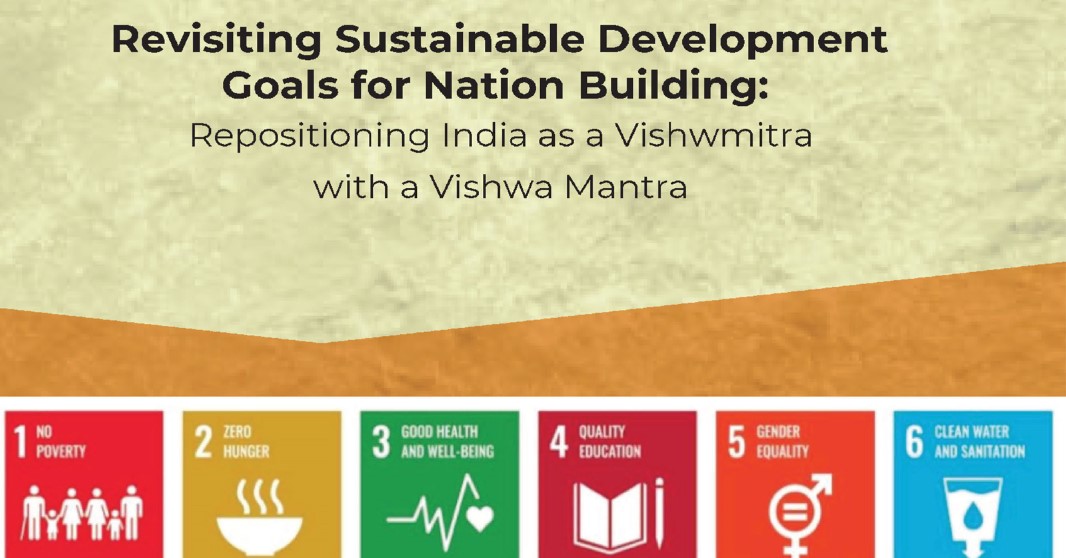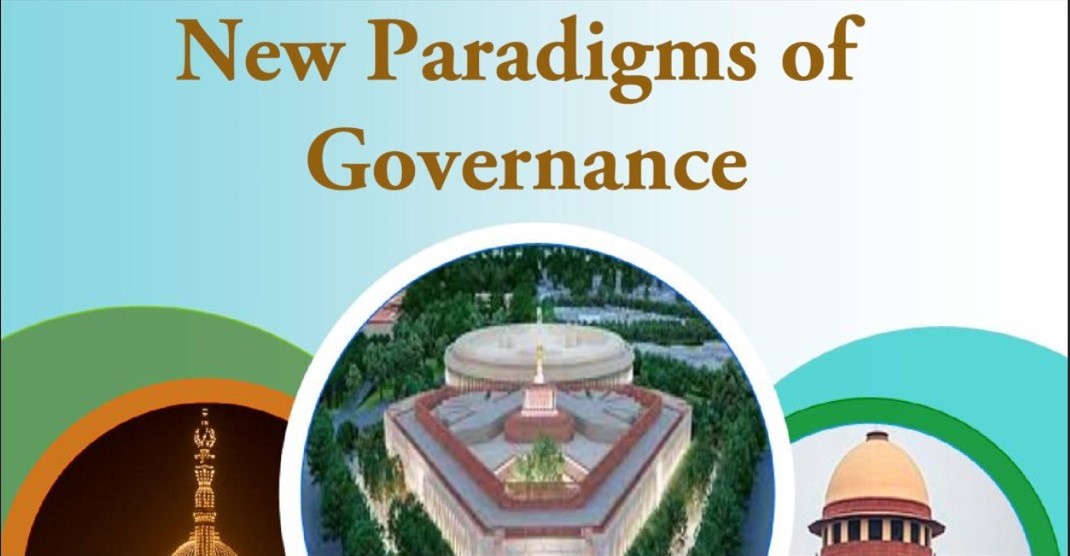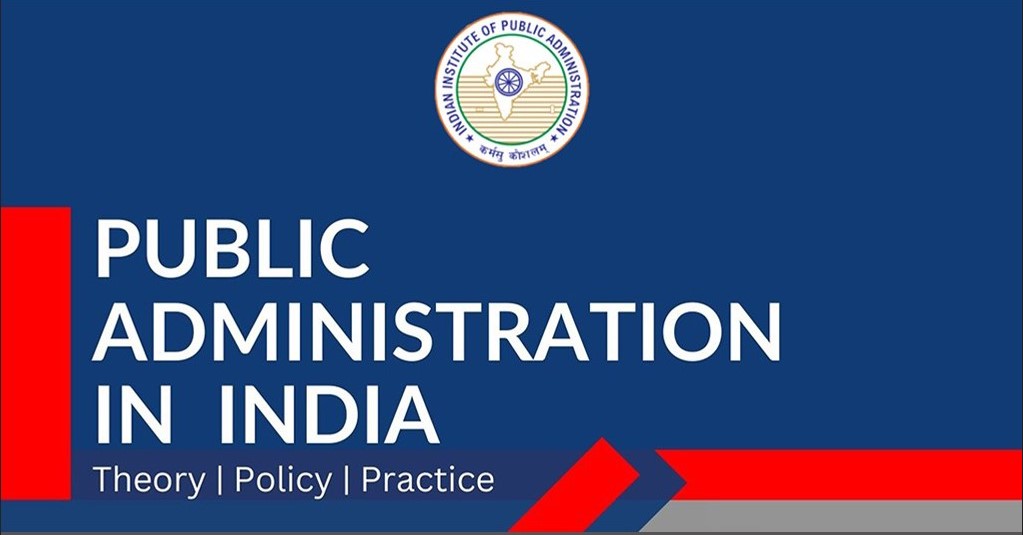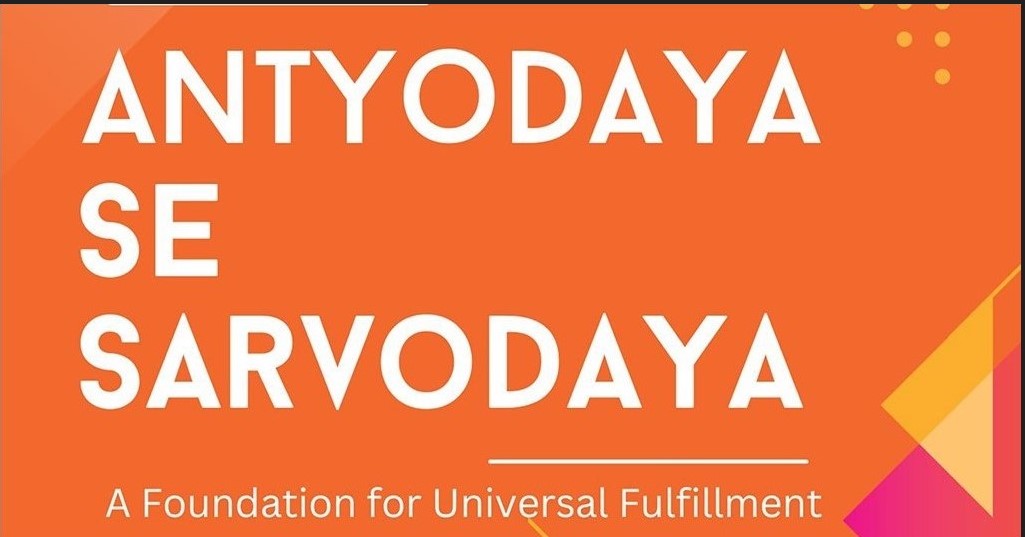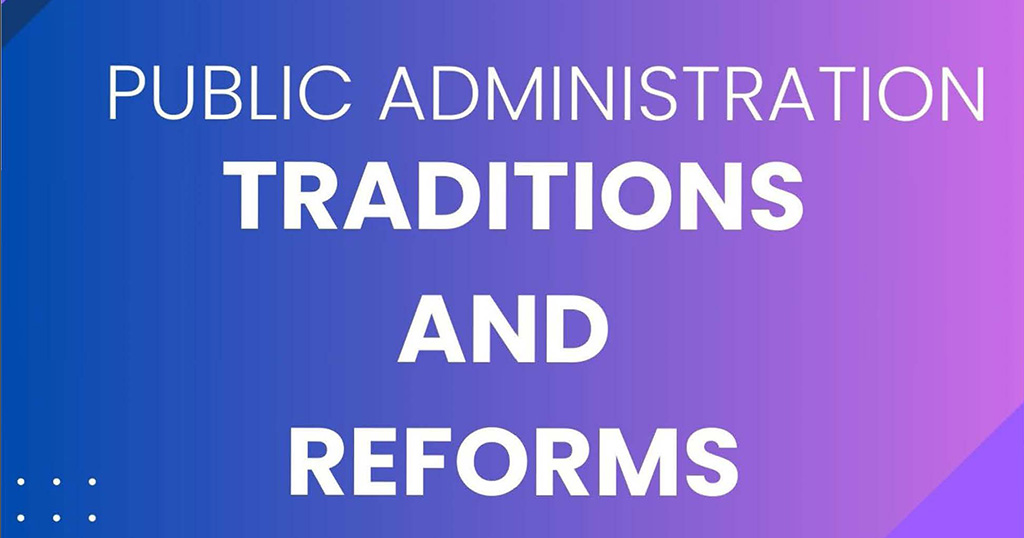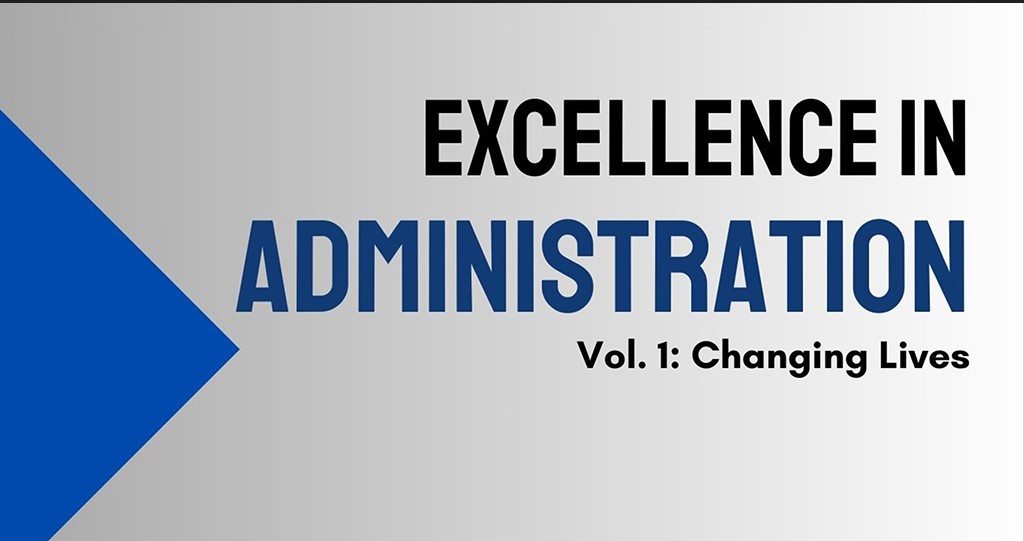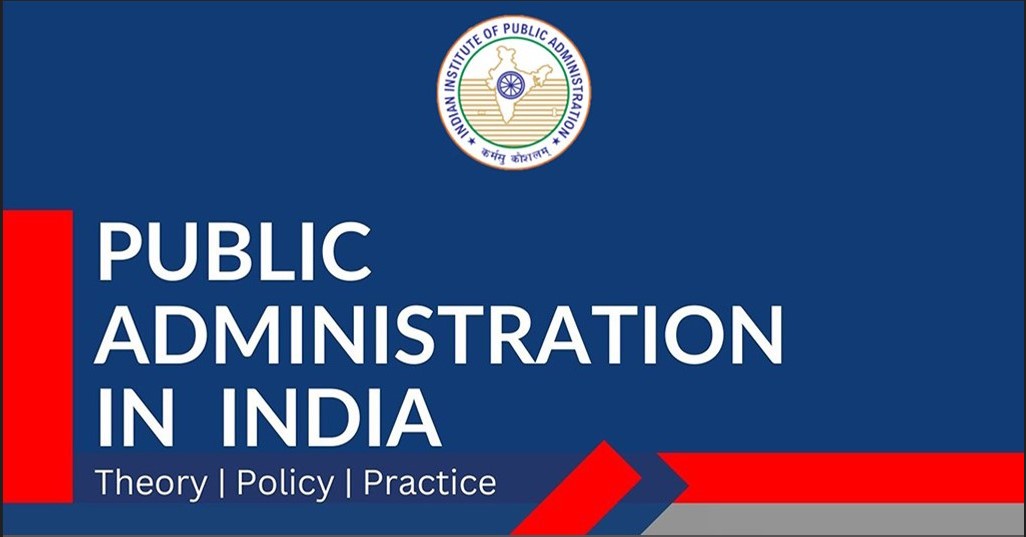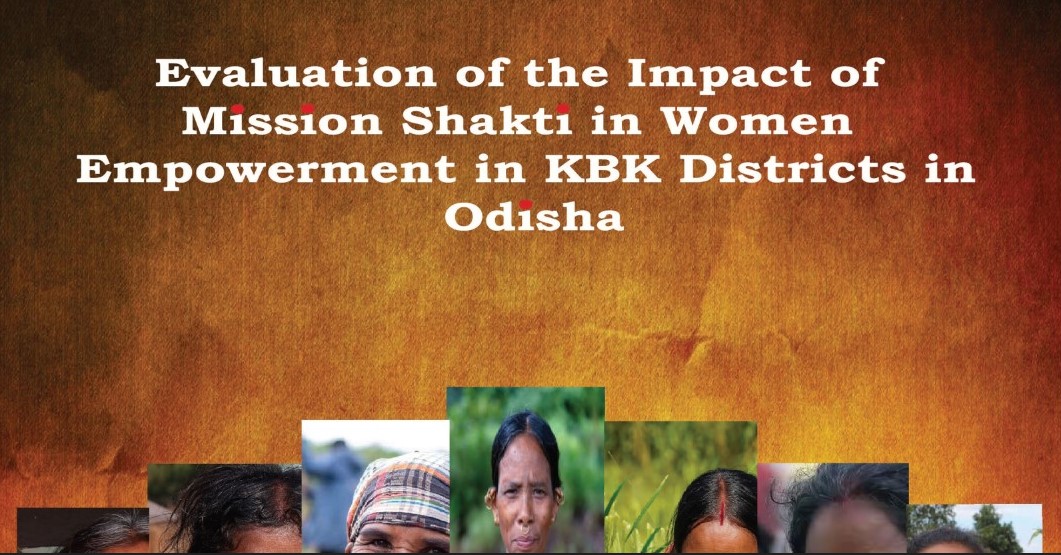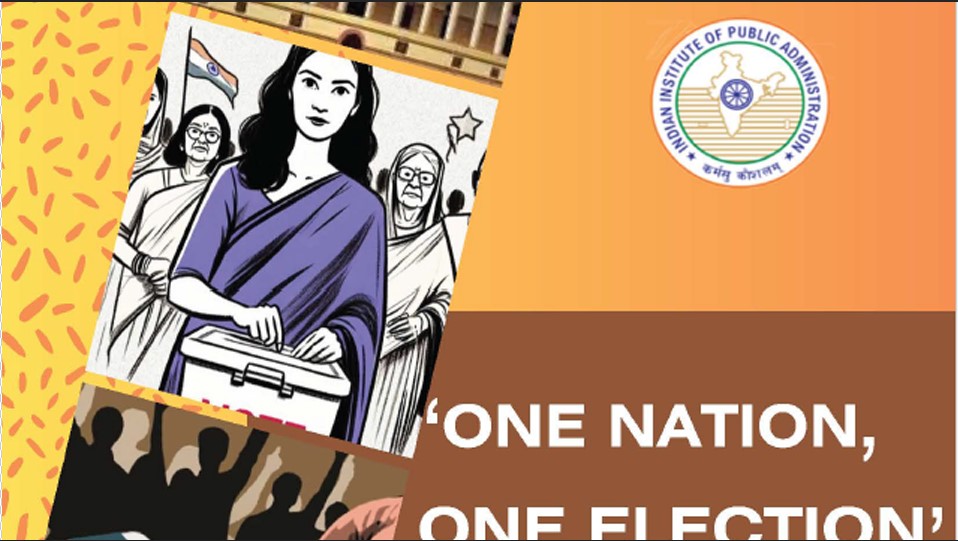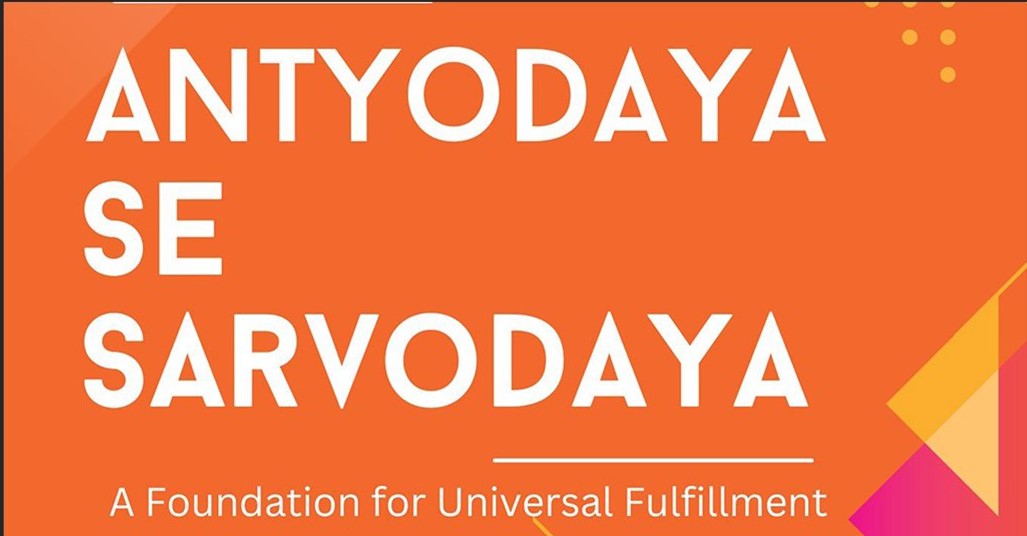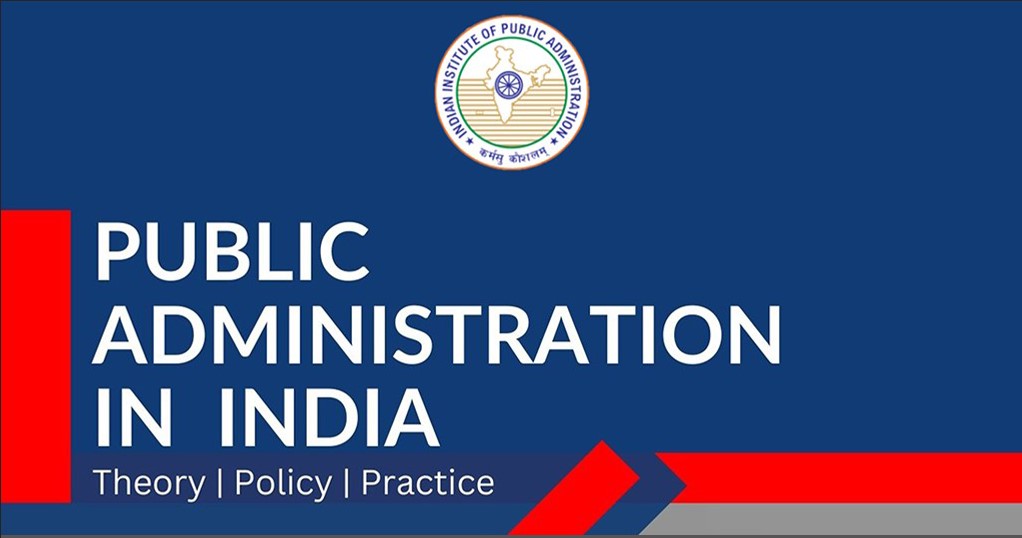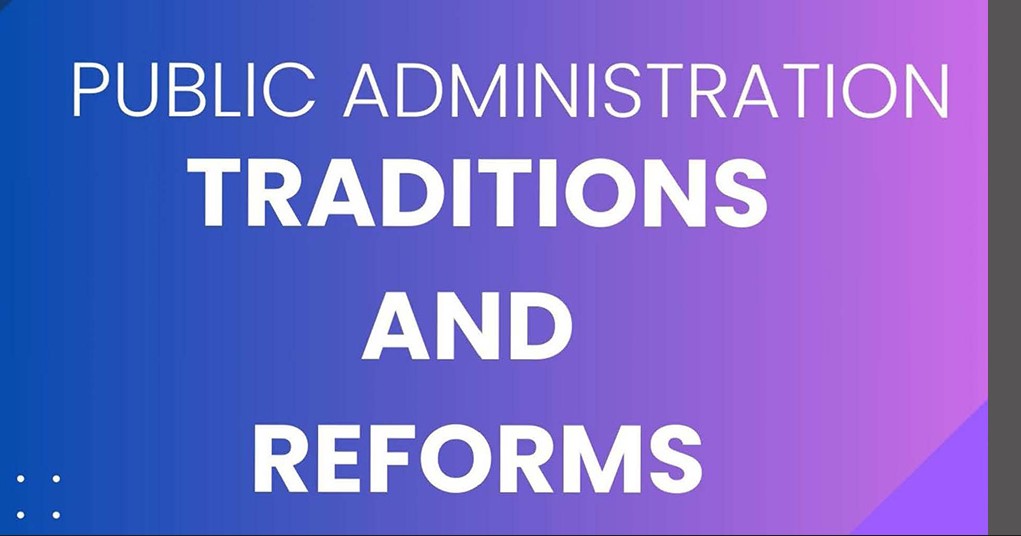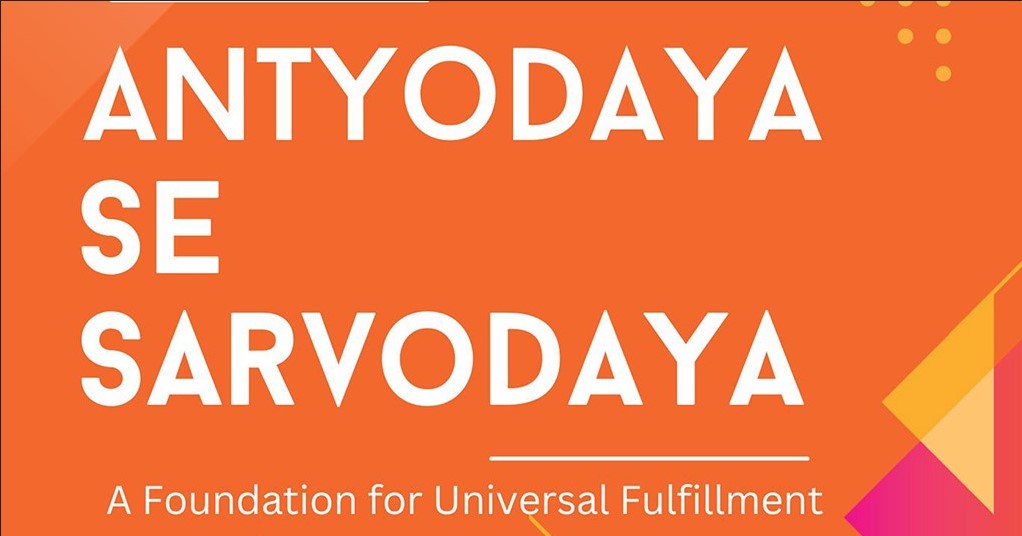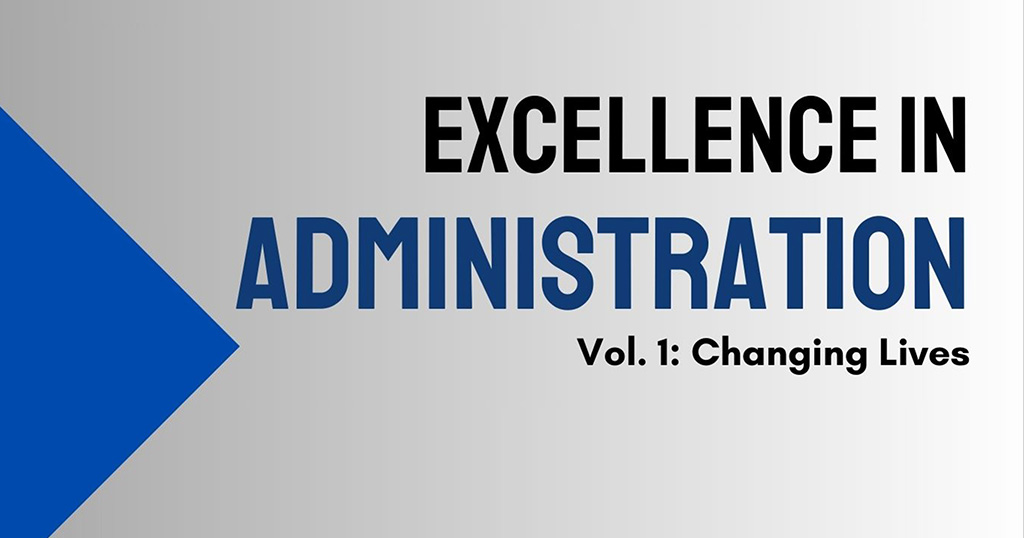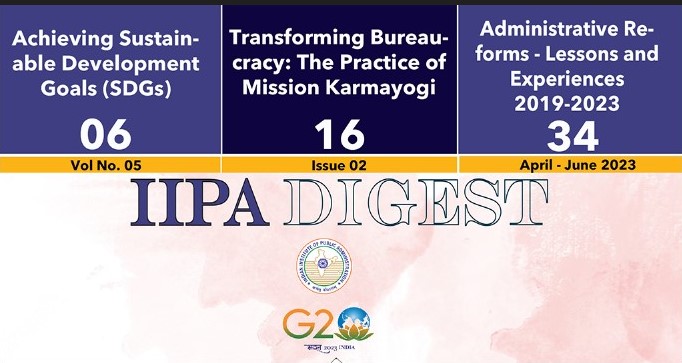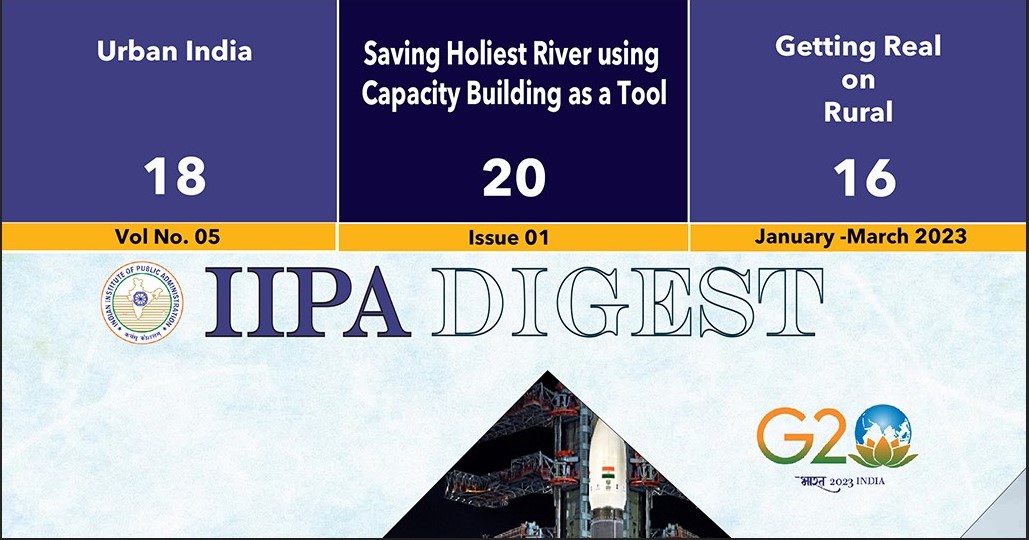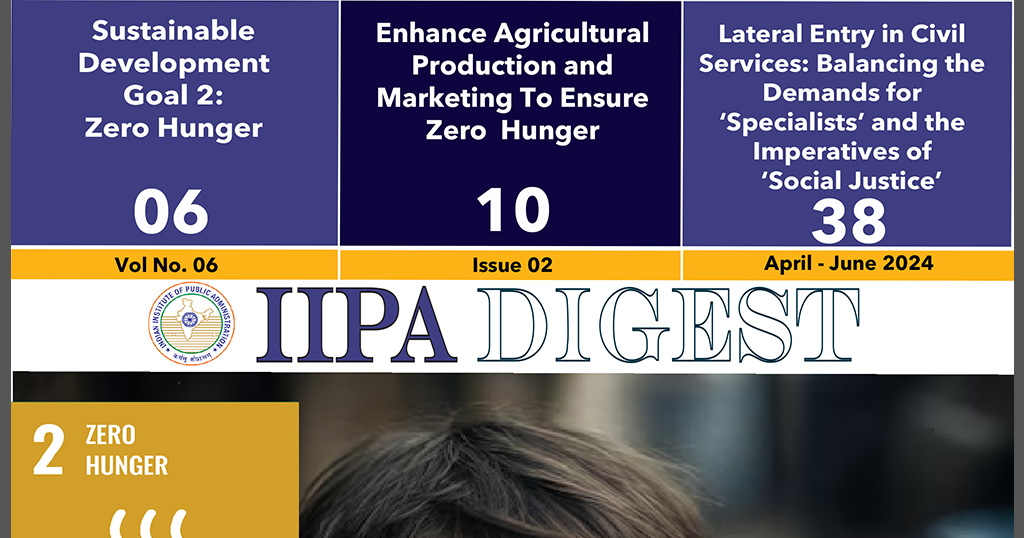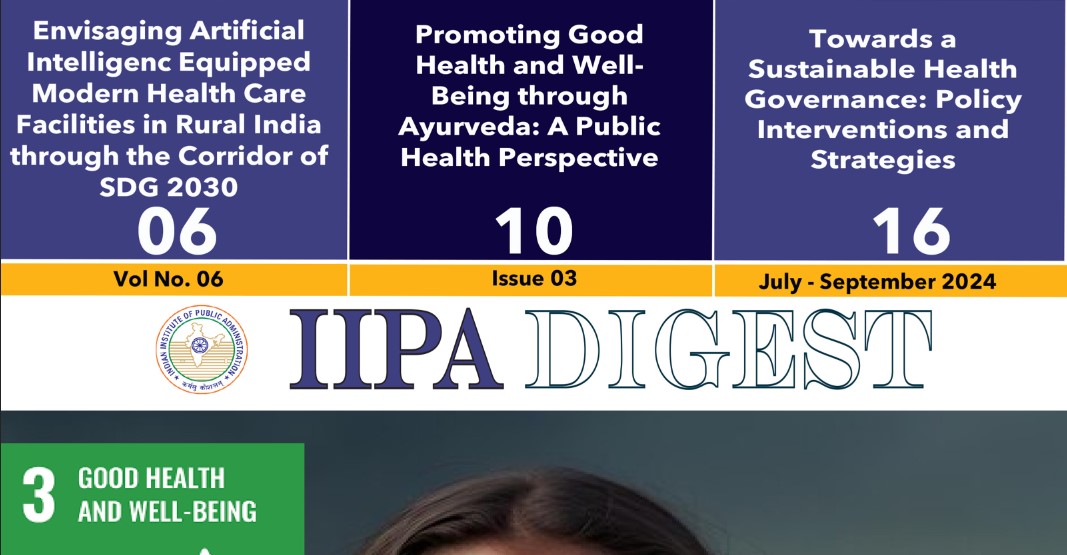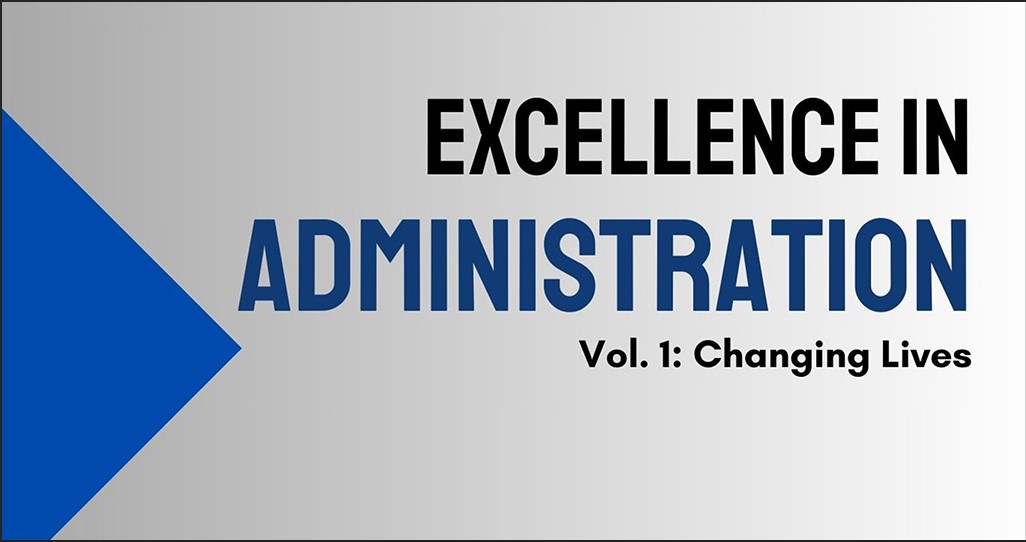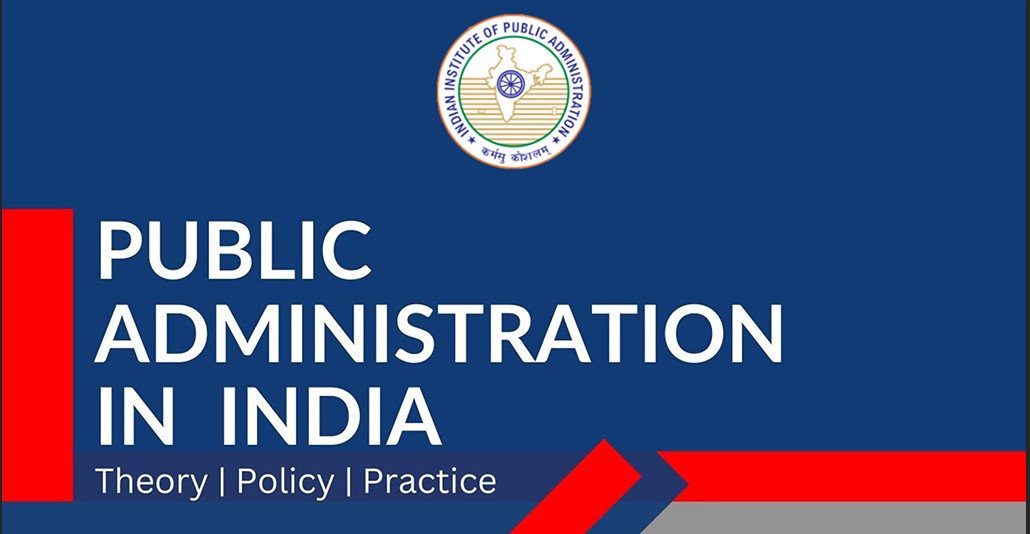Public Sector Undertakings: Public Sector in Modern India
14. Coverage
Public Sector Undertakings: Public sector in modern India; Forms of Public Sector Undertakings; Problems of autonomy, accountability and control; Impact of liberalization and privatization.
The chapter is spread over five parts. The first part details meaning, objectives and significance of public sector. Forms of public sector, changes over the years, and issues of autonomy and accountability are the subject matter of the second part. The next part relating to internal restructuring discusses techniques of MOU, categorisation of PEs as Maharatanas, Ratanas, and Balance Score Card (BSC) and the problems of autonomy and accountability. External reconstructing covering economic reforms and industrial licencing policy leading to disinvestment and privatisation, their meaning, objectives, and governance issues arising therefrom are presented in part four. The last part highlights public sector management issues relating to asset monetisation policy, liberalisation measures towards attainment of the national objective of minimum government and maximum governance, the Atam Nirbhar Bharat to be a developed economy by 2047.
Public sector, also known as State Sector or Government Sector, includes all activities funded out of government budget. As such, government owns, manages, regulates and controls public sector.
Public sector was conceived basically as an instrument of economic development for ensuring law and order and protection of individual property, in particular in developing economies, since attainment of political independence. It has acquired a prominent place and has witnessed phenomenal growth over the years. This is particularly so where governments assumed an obligation to regulate private entrepreneur’s tendency to make monopolistic profits, eliminate social, economic and regional inequalities and invest in socially profitable ventures. This was with the objective to speed up the rate of economic growth and technological development, so as to achieve self-sufficiency and self-reliance, and provide manifestations of political independence and modernization.
Public sector is of great significance importance in India; it accounts for approximately two-fifth of total gross investment (or gross capital formation) and contributes a quarter of gross domestic product (GDP).
14.1 Public Sector Forms: Changes over the Years
Public sector basically takes two forms as,
a). Ministries or Government Departments, Minister is the in-charge, follows government rules and is accountable to the Parliament; these include
i). government ministries and administrative departments covering activities relating to fiscal, general administration, community services; and
ii). economic services and commercial departments normally engaged in production of goods and services covering railways, postal services, dairy and milk supply units, ordnance factories, state electricity boards, water and sewerage works; these are normally suited for adoption of principle of ‘commercialization’ to charge for their goods and services and are in the nature of ‘limited access projects’;
b). Incorporated enterprises; it takes two forms as,
i) Statutory Corporation set up under a Statute (Centre or State), has a Board headed by a chairman and functions as per the Statute; General Insurance Corporation (GIC), Damodar Valley Corporation (DVC), and erstwhile, Life Insurance Corporation (LIC), are the examples
ii) Joint Stock Company (JSC) set-up under the Indian Companies Act; it functions and works as per Indian Companies Act, has a Board of Directors: headed by a chairman; 51 percent and above of its paid-up share capital is held by the Central or State Governments; it also includes a company which is a subsidiary company of such government company; IOC taking over IBP; and ONGC taking over HPCL are the examples. These are popularly termed as Public Enterprises (PEs). There are 272 operating Central Public Enterprises (CPEs), of which 212 reported net profits of Rs. 3.43 trillion, around 48 percent higher than Rs. 2.18 trillion in the FY 23. and have about 18 lakh employees. In addition, there are about 800 state level public enterprises (SPEs).
Over the years there has been a tendency, world wise, to transform government administrative or commercial departments to incorporated enterprises with an objective to grant autonomy, to bring in competition and to introduce market forces. Separation of telecom from postal ministry, and setting-up of MTNL, VSNL, BSNL; or conversion of Indian Airlines or Air India, statutory corporations under the Civil Aviation Act to joint stock companies under the Indian companies; are some of the examples1. (Dhameja & Banerji, 2011). Similar are the examples of Oil and Natural Gas Commission (ONGC), and ordnance factories discussed as under.
ONGC founded in the form of Oil and Gas Division under Geological Survey of India in 1955, was converted into Commission on August 14, 1956; and that was converted as a Corporation under the Indian Companies Act in 1997 and was conferred with Maharatana Status in 2010. 41 ordnance factories under Ministry of Defence were converted into seven joint companies with effect from October 7, 2021.
The above examples of conversion of a division to commission or to a corporation were with the objective to enhance their functional autonomy, efficiency and unleash new growth potential, the aspect is discussed later.
14.2 Public Sector: Objectives
The Industrial Policy Resolution of 1956 guided the policy and functioning of public sector in India and assigned it a strategic role in the economy with the following major objectives:
• to help in the rapid economic growth and industrialisation of the country;
• to earn return on investment and generate resources for development, redistribution of income and wealth;
• to create employment opportunities;
• to promote balanced regional development;
• to assist the development of small-scale and ancillary industries and
• to promote import substitutions, save and earn foreign exchange.
14.3 Managerial Autonomy and Accountability
As such, the public sector was given primary responsibility for setting up of new industrial undertakings, and all industries of basic and strategic importance. However, the Industrial Policy 1991 abolished monopoly of any sector or of any individual enterprise in any field of manufacturing, except the units set up on strategic or military considerations. and public sector has to run on business lines. In other words, the Industrial Policy Statement 1991 was an attempt towards liberalization of the economy, was designed to unshackle the economy from the cobwebs of unnecessary bureaucratic controls, it provided for opening up the public enterprises to private sector; referring of the chronically sick public enterprises to BIFR for formulation of plans for their revival; disinvestment of government shareholdings in selected public enterprises. The disinvestment was with the objective to raise resources and to encourage wider public participation by offering shares to mutual funds, financial institutions, general public and workers.
This was necessitated as the World Bank Report on Reform of Public Sector Management (1991) reported that, the State in a developing country has tried to do too much through public sector or has assigned to public agencies tasks for which they were ill suited, or has retained activities in public sector when conditions justifying public management has changed.2
Public enterprises in India are autonomous, have their boards of directors as their policy making body, but are subjected to various types of controls including different forms of audit and also parliamentary control. To quote from the Arjun Sengupta Committee Report, “it is recognised by all that, on paper, management of public enterprises enjoy large autonomy, sometimes much more than even by the private sector management. However, in practice, informal and formal involvement of Ministers and Departments take place in areas wholly within the decision-making powers of public enterprises”.2
Public enterprise evaluation system followed in Sweden and other countries like, Norway, Korea is a decentralized system. Supervisory Board of professionals is vested with the power to manage the enterprises and to report to a committee of elected representatives belonging to various political parties; it protects the directors and management from undue political manoeuvring and also enables it to exercise effective control over public enterprises. (Ayub, Mahmood A, & Hegstad Sveno (1987)3
14.4 Memorandum of Understanding (MOU)
In order to improve performance of public enterprises by giving operational autonomy and by enforcing accountability commensurate with authority for results, a system of Memorandum of Understanding (MOU) was adopted in 1986 on the recommendations of the Arjun Sengupta Committee. An essential part of MOU is the enumeration of a number of agreed indicators and targets to arrive at a composite performance score for evaluation of performance.
Thus, MOU is a negotiated document between the government, as the owner of Public Enterprises (PEs) and the specific PE. It contains the intentions, obligations and mutual responsibilities of the government and the PE. Further, MOU makes an attempt to move the management of PEs from management by controls and procedures to management by results and objectives.
The process of signing of MOU is initiated with the issue of guidelines by the MOU Division for drafting of MOUs. These guidelines indicate the broad structure and aspects to be covered in the draft MOU including the weights to be assigned to the financial parameters. These guidelines reflect the main concerns of the government and contain the general direction to the PEs.
In fact, the MOU negotiation meetings also provide a forum to discuss certain good practices adopted in other PEs and in a way these innovative ideas are disseminated through this process. The MOUs finalised during these meetings are signed by the Chief Executive of the PE and the Secretary of the concerned Ministry before 31st of March.
Evaluation of MOU: Performance of the PE is evaluated with reference to the MOU targets. Review meetings held during the year provide an opportunity to consider the proposals to adjust the criteria, values for factors which were not predicted and could not have been predicted by either party. Thus, the MOU evaluation is finalised on the basis of the actual performance and the PEs are graded on a five-point scale as "EXCELLENT", "VERY GOOD", "GOOD", "FAIR" & "POOR".
Achievements of the MOU System are:
• focus on achievements of results;
• operational autonomy is encouraged and increased by delegation of more financial and administrative powers to the MOU signing PE;
• stress on marketing effort in comparison with private sector enterprises and to face competition;
• quarterly performance review (QPR) meetings are more focused and discussion is confined to overall achievement as outlined in the MOU.
Thus, the MOU is a negotiated document and contains the intentions, obligations and mutual responsibilities of the government and the PE. Further, MOU makes an attempt to move the management of PEs from management by controls and procedures to management by results and objectives, as such it is a system of internal restructuring.
The MOU system has grown over time from four MOUs signed in the year 1987-88 and at present all operating central public enterprises (CPEs) are required to sign MOU with the concerned administrative Ministry, or the subsidiary CPEs with their respective holding companies.
An essential part of MOU is the enumeration of a number of agreed parameters and targets to arrive at a composite predetermined score for evaluation of performance3. The parameters include return for shareholders, market capitalisation, productivity factors and production indicators, these are indexed to past performance and future projections of the CPE; government's priorities/programmes such as CSR (Corporate Social Responsibility), procurement from MSEs; non-compliance of a parameter is assigned negative marks. Marks are allotted for the parameters in relation to the achievement in the range of 50 to 100 percent; score on all parameters is added to arrive at aggregate score. The MOU system is significant as Performance Related Pay (PRP) is linked with the performance evaluation through MoU framework. CEs are rated as per the MOU score as under:
CPE Rating: MOU Score Bases
Rating Score
Excellent >=90%
Very Good >=70
Good >=50
Fair >=33
Poor <33
14.5 Public Enterprises Categorization: Maharatanas, Ratnas & Mini Ratanas
Further, in order to give more operational freedom and to facilitate decision making, central public enterprises are classified in various categories as Ratanas, Mini-ratanas and Maharatanas. Originally, the term Navaratana meant a talisman or ornament composed of nine precious gems. Later, this symbology was adopted in the courts of Emperor Vikramaditya and the Mughal emperor Akbar, where the Navaratanas were a group of nine extra ordinary men in their respective courts
Accordingly, the Central public enterprises are divided into three categories as4
• Maharatana
• Navratana
• Miniratana CPEs
Maharatana status: In 2009, the government established the Maharatana status, which raises a company's investment ceiling from Rs. 1,000 crore to Rs. 5,000 crore. The Maharatana firms can now decide on investments of up to 15 per cent of their net worth in a project; whereas the Navaratana companies could invest up to Rs 1,000 crore without explicit government approval.
Navaratana status: Navaratana was the title given originally to nine central public enterprises (CPEs), identified by the Government of India in 1997 as having comparative advantages, which allowed them greater autonomy to compete in the global market. The number of CPEs having Navratana status has been raised to 16.
In addition, the government created another category called Miniratana. which could also enter into joint ventures, set subsidiary companies and overseas offices but with certain conditions. At present, there are 66 government enterprises that were awarded Miniratana status, under two categories I & II. These include public enterprises which have made continuously profits for the last three years have a positive net worth, they have the autonomy to incur capital expenditure without government approval up to Rs. 250 crore or up to 50 percent of their net worth, whichever is lower.
In short, system of ‘Memorandum of Understanding’ (MOU), negotiation between the government and the public enterprise (PE) with the objective, to move the management of PE from ‘management by controls and procedures’ to ‘management by results and objectives’; and categorisation of PEs as Maharatana, Navratana, or Mini Ratana was another approach to grant operational autonomy to facilitate decision making.
14.6 Balanced Score Card (BSC)
According to a research study5 MOU is used as a technique to quantify both the social and economic obligations of public enterprises (PEs) into measurable terms. MOU specifies and clarifies the relationship and respective role of PE with the government; management of the PE is made accountable to the government on agreed objectives set by them. However, the technique of measurement under MOU has a little impact and scope to incorporate global best practices. MOU takes into consideration only mutually agreed indicators and has limited access to non-financial parameters; other measures in respect of global trend of knowledge management, information capital flow, process efficiency, customer satisfaction, internal processes, employees’ satisfaction and skills, interest of all the stakeholders and excess manpower are hardly considered.
Balanced score card (BSC), a new management system for PEs, not only bridges the hindrances/gaps lying under MOU, but also incorporates the interest of all the stakeholders. BSC5 is a performance metric used to identify, improve, and control a business's various functions and resulting outcomes. As a part of their strategic planning framework, companies assign priority to their products, projects, and services; lay down targets; and plan the routine activities.
This process enables companies,
• to monitor and measure the success of their strategies,
• to determine how well they have performed.
It acts as a structured report to measure the performance of company’s management. As such, management can be evaluated against Key Performance Indicators (KPIs),
The BSC indicates management’s contributions to the strategy and attainment of the targets set forth; the success is measured against the specified goals or targets to determine the rate at which the business is growing and how does it compare with competitors; focus is on a strategic topic relevant to the organization, and it uses both financial and non-financial data to create strategies.
The concept of BSCs was first introduced in 1992 by David Norton and Robert Kaplan, it takes into consideration multiple indicators and includes financial and non-financial parameters; it is used to measure and provide feedback to organizations. The balanced scorecards are common among companies in the United States, the United Kingdom, Japan, and Europe. Data collection is crucial to provide quantitative results as managers and executives gather and interpret the information. Company personnel can use this information to make better decisions for the future of their organizations.
BSCs were originally meant for-profit companies but were later adapted for non-profit organizations and government agencies. It is used as a measure intellectual capital of a company, such as training, skills, knowledge, and any other proprietary information that gives it a competitive advantage in the market.
14.7 Economic Reforms: Disinvestment and Privatisation of PEs
It may be mentioned that the system of MOU and categorisation as Maharatana, Navaratana, or Mini Ratana to grant autonomy, discussed above, are system of internal restructuring of the enterprise, while disinvestment and privatisation is restructuring external to the enterprise.
Industrial Policy Resolution 1991. as a process of economic reforms abolished industrial licencing except for industries relating to security and of strategic importance; pruning down the list of industries reserved for public sector and opening up of the public enterprises to private sector; allowed disinvestment of government shareholdings in selected public enterprises, with the objective to raise resources and to encourage wider public participation by offering shares to mutual funds, financial institutions, general public and workers. Disinvestment of shares also includes, when public enterprise takes over another public enterprise, examples are, IOC took over IBP; and ONGC took over HPCL.
Disinvestment and privatisation are other approaches to grant autonomy: disinvestment means the dilution of stake of the government in a public enterprise (Koner and Sarkhel, May-June 2014)6, while under privatisation, government ceases to be the owner in favour of a private organisation- domestic or foreign.
14.8 Disinvestment in UK
United Kingdom (UK) was among the first countries to successfully adopt and implement the disinvestment and privatisation programme globally. The core objectives of any disinvestment or privatisation programme were:
• to increase the efficiency of the enterprises and of the economy, and
• to raise funds to meet socio-economic objectives to reduce fiscal deficits and also to reduce the drain of public resources by way of subsidies and capital infusion.
In initial stages, the government sold companies such as Britoil and British Airways, which were operating in a competitive environment and were self-sustaining. Later, companies which were monopolies such as British Telecom, British Gas, etc were sold after restructuring into smaller entities, allowing them to compete among themselves. In addition, regulatory system and a regulatory body was set-up for better price and service regulation to protect the interest of end consumers. In the final phase, companies that depended on government subsidy and were performing social duties on behalf of the government, like Railtrack, etc. were sold. In these cases, public private partnerships (PPP), allowing private operators to manage services while still receiving subsidies, were established. In short, in UK, once a sector had been opened up for private operators, the government’s role steadily declined. In India, however, the bulk of investments in PEs have happened in sectors that have been opened up to the private sector with economic liberalisation post 1991.
14.9 Privatisation & Disinvestment: Meaning
Privatisation, in a broader term, has been used as involvement of greater market forces to ensure higher competition which entails reducing the role of the state as a regulator, facilitator, welfare provider and producer (Dhameia,2022, December)8. It also refers to liberalisation of regulations to unleash forces of competition and to introduce market forces into the economy. On the other extreme, privatisation in a narrow term refers to divestiture or denationalisation i.e. the transfer of ownership from the state to private hands. Within these two extreme, privatisation would take following forms (Vuytstoke)7
Transfer of shares of public enterprises to public;
Private placement of shares;
Additional investment in public enterprises by private hands;
Sale of PE assets;
Reorganisation of PEs into separate entities, like ‘holding’ and ‘subsidiary’ company;
Management/employee buy-out;
Privatisation either by lease or by management contract;
Economic policy reforms, such as deregulations or liberalisation. i.e. transferring some activity like transportation, road construction, or public works, or electricity generation to private hands.
Of the above, the first four involve sale or transfer of shares or ownership, while the last four do not necessarily require sale or transfer of share, rather involve leasing, management contracting, liberalisation, or setting up of holding form of organisation.
Disinvestment: Of the above first two, (i.e. transfer of shares of public enterprises to public, or private placement of shares) sale of only a part of the equity share holding so as the government retains 51 percent and more of the share capital, and thereby retains control of the enterprise; this is disinvestment. Disinvestment normally takes following two forms:
a). Sale of only a minority or a part of the equity share holding and the government retains 51 percent and more of the share capital, and thereby retains control of the enterprise; it is an example of disinvestment and is also known as ‘partial privatisation’. or fraction equity sale
b). Strategic Disinvestment: when there is sale or transfer of large portion up to 50 percent or more of the government’s shares to a private enterprise; and management control of the enterprise is also transferred to the private player, this process is known as strategic sale and strategic disinvestment. As such, the strategic disinvestment relieves the government of the responsibility of maintaining a non-performing public enterprise.
Thus, when there is disinvestment or sale of 51 percent and above of its equity capital held by the government to a private enterprise and also the control and management of the enterprise is transferred to private organisation, it results in privatisation.
As against the above, Keynes defined disinvestment as “the sale of an investment.” (Aiyar January 30, 2018). In India, disinvestment is not necessarily disinvestment as Keynes defined, rather it has been defined, in the words of Aiyar, as the leverage of ‘public assets to be used as an ATM for revenues to fill the pits of rising deficit’. Acquisition of shares of public enterprises by another public enterprise, which may result in merger, or equity swap also known as cross holding of shares; or shares-buy-back, or creation of SPV, or creation of Exchange Trade Fund (ETF) are methods of disinvestment mainly followed in the last fifteen years. These disinvestment methods, gave rise to transfer of cash from the coffers of the company which it might require for its growth or productive purposes, to the kitty of the government to fill the gap in disinvestment targets (Aiyar, January 30, 2018)9. Such disinvestment strategies are not disinvestment as defined by Keynes.
922,725 crore, i.e. only 56 percent. Det Disinvestment of government shareholding, as per Industrial Policy 1991 and economic reforms, started in 1991-92, and has yielded Rs. 518,441 crore as against the target of Rs. ails of year-wise disinvestment grouped under phases are presented in Table 1.
Table 1: CPEs Disinvestment during 1991-92 to 2020-21 (Rs. Crore)
Analysis of disinvestment proceeds presented in Table 1 raise governance issues as:
• Disinvestment i.e. sale of government shareholding in India has been an annual exercise and the proceeds are included in the government budgetary receipts under Article 112 of the Constitution;
• Disinvestment had the objective to increase efficiency of the public enterprises, to introduce market forces;
• In the first year, disinvestment was made by grouping the selected enterprises into bundles, each bundle consisting of shares of nine enterprises, three from each category of ‘very good’, ‘good’, ‘average’. The categorization was on the basis of their net asset value (NAV), reflecting net worth, of the enterprise. Sale of shares in the initial years has been to mutual funds, investment companies, insurance companies and UTI;
• Realization on disinvestment has been below the target except that for the year 1991-92, that too due to certain exceptional situation, (Dhameja and Sastry 1998)10 and for the year 2017-18; and about sixty percent of realization had been during the last nine years;
• Disinvestment had generally been by inviting bids, a fixed price or a price range; in the latter, final price was decided which could be either by French Auction process or Dutch Auction process. In Dutch Auction process, also known as book-building process, final price decided on the basis of bids received, was the equilibrium price, or the cut-off-price, at which bids were accepted; bids received below the price fixed were rejected, while the bids received at price higher than the price so fixed were accepted and the excess amount was refunded. The book-building process, was common in the international market for GDR issue and was recommended by the Disinvestment Commission for domestic issue of shares in India; and had been adopted in later years of disinvestment in India; it was adopted for disinvestment of NTPC shares in 2017. As against the above, under the French Auction process, the bidders pay the price they bid, rather than a common cut-off price followed in the book-building process (i.e. Dutch Auction process). The bidding process under ‘the French Auction process (Dhameja January-March 2006)11 is open to all public sector banks and FIIs, however, there is a lock-in period of six months; each bidder is obliged to make the purchase at his bid prices, and he would be allocated the shares he bids for. If the highest bidder does not ask for all the shares on offer at his price, the allocation will be made at still lower bid prices till all the shares on offer get allocated. Each bidder pays the price he has bid and, in this process, the government unleashes the aggressive pricing of the bidders. For example, the government offloaded eight percent stake in MUL, in January, 2006 to eight public sector banks and financial institutions for Rs. 1577 crore, at an average price of Rs. 678.24 per share, the price which was higher than the then prevailing market price;
• The process of disinvestment has changed with the change of government over the years. ‘Fractional equity sale’ during Phase I (i.e. during 1991-92 to 1998-99), and phase III (i.e. during 2004-05 to 2013-14) was followed with the objective to introduce market forces, to encourage wide public participation and to raise resources. As against the above, during Phase II (i.e. during 1999-00 to 2003-04) and Phase IV (i.e. during 2014-15 onwards), strategy of disinvestment included strategic sale and was followed. In other words, disinvestment process took double “U” turn from ‘fractional equity sale’ in the initial years to ‘strategic sale’ during 1999-2000 to 2003-04, to fractional equity sale in the years starting from 2004-05, again to strategic sale 2014-15 onwards. The fraction equity sale was characterized as a ‘passive disinvestment’ without any change of ownership or control, or without having any positive effect on economic reforms; while under strategic sale substantial stake in an enterprise was sold resulting in transfer of management control or privatization of the enterprise. The enterprises privatized included Modern Food Industries, Hindustan Zinc, IPCL, CMC, VSNL, PPL, and HTL.
• The disinvestment process has largely been dominated by fractional-equity sale and the process accounted for about three-fourth of the total realization; in other words; only about 24 percent has been raised through strategic sale. In this regard, to quote Anup Bagchi13 though initial privatisation efforts across the world were aimed at increasing efficiency, gradually as the world entered into economic turmoil, governments have increasingly tilted towards disinvestment as a route to finance fiscal deficits. This holds true in the Indian context as well” (Bagchi 2014). Further, to quote Economist Weekly London, (Economist London , 1995)13, “partial disinvestment of equity in the public sector enterprises fails to address the efficiency problems it has no impact on ownership, control and managemen. It has been used more as a fiscal tool in order to raise cash to finance the government deficit, rather than to improve the efficiency of enterprises operations. There is also danger that such an approach can be temptation to privatisation badly and postpone the more difficult but much needed longer-term fiscal reforms.”
• Strategy of equity-swap among IOC, ONGC, and GAIL, first of its kind, was adopted during 1998-99. As per the arrangement, IOC acquired from the government, ONGC shares (10 percent), GAIL shares (5 percent) for Rs. 2,200 crore. Similarly, ONGC paid to the government for acquiring the shares of IOC (10 percent) and GAIL share (5 percent); GAIL also acquired shares in ONGC (2.5 percent) and shares of IOC (2.5 percent). The strategy of equity swap resulted in transfer of cash to government kitty by transferring shares of one company to another. Such strategy, though was expected to have synergic effect on the enterprises operation but had a dampening effect on share prices of the scripts swapped, as during January-March 1999, the share prices of the scrips fell by approximately 30 percent, whereas share price index (i.e. Sensex) increased from 3122 to 3703 during this period (Dhameja and Sastry 2002),
• Similar to disinvestment through equity-swap or share cross holding discussed above, disinvestment was made by which government shareholding in a public enterprise was acquired by another PE. This process of disinvestment, involved transfer of shares of a company to another, and was a form of strategic sale, the latter company became the holding company (a public sector Company) and the former remained as a public-sector company, this was a quicker and simpler method of disinvestment. Merger of IBP, India’s oldest standalone oil marketing company, with IOC, country’s largest petroleum and marketing company in May 2002 is an example. As such, the government divested its 33.58 percent stake in IBP in favour of IOC;
• Another example is that ONGC acquired entire government’s stake of 51.11 percent in HPCL for Rs. 36,915 crore in 2017-18, to become an ‘integrated energy giant of global scale’. As per this process, ONGC became the holding company, but the HPCL did not merge and continued as a listed subsidiary of parent ONGC. The acquisition enabled the government to meet its disinvestment target of Rs. 103 Lakh crore for the year;
Such disinvestment practices doled out cash from the enterprise
to the government kitty. As per Keynes definition, as mentioned
earlier, these don’t fit into the meaning of disinvestment;
• Disinvestment proceeds have increased over the years, in most cases the target sets have not been met;
• This is despite, by adopting various disinvestment approaches like, share-buy-back, shares-cross-holdings, offer-for-sale, follow-on-public-offer, block deal, exchange-trade-fund, sale of block of shares. LIC had substantially subscribed to disinvestment and in many cases has saved the disinvestment; (Dhameja, 2018)15
• Disinvestment process has taken double “U” turn from ‘fractional equity sale’ in the initial years (Phase I) to ‘strategic sale’ during 1999-2000 to 2003-04 (Phase II); again to ‘fractional equity sale’ in the years starting 2004-5 (Phase III) to ‘strategic sale’ 2014-15 onwards (Phase IV);
• Fractional equity sale, or partial privatisation, was characterised as a ’passive disinvestment’ without involving change of ownership or control, On the other hand, strategic sale reflected that a substantial stake in an enterprise was sold resulting in transfer of management control or privatisation of an enterprise (Dhameja, March 2006)16,
• it is viewed that the disinvestment process usually takes a long time with some entities even undergoing four iterations, and also that ideally disinvestment should not be a part of the budgetary numbers and should be tackled separately with the receipts being put in escrows17;
• CPEs are reported of losing their shine as the total market capitalisation of CPEs, though has increased in absolute values; the ratio of total market capitalisation of CPEs to that of BSE listed companies has reduced from 13 percent to 8.3 percent during 2016 and 2024.
14.10 Asset Monetisation approach: an alternative to privatisation
Besides privatisation and disinvestment of public enterprises, private sector has also been involved in public sector institutions by diverse PPP approaches; these include,
• private companies were invited to operate 150 trains on 109 routes involving an additional investment of Rs. 30,000 crore;
• Asset monetisation, a marketing approach towards raising resources for financing and development of infrastructure, was planned to raise Rs. six lakh crore for four years starting 2022. This approach involved encashing of the idle assets of public sector units, the ownership being retained by the government. It was a step towards economic reform, and was an alternative to privatisation.
Following of the asset monetisation approach, six airports have been monetised by long-term lease of 50 years on PPP approach, the private party having a guaranteed 16 percent return on equity. In addition, 25 other airports are planned to be monetised for operation and management. Highways and other infrastructure projects have also been developed by adopting various PPP approaches like, BOOT, BOT, Annuity system.
• Growing urbanisation and shifting of population to cities and towns has led to a transition from agrarian society to industrial one. As per World Bank estimates, in order to be Atam Nirbhar Bharat, and be a developed economy by 2047, it would require an investment of $ 840 billion by 2036, i.e. $ 55 billion every year. This mammoth envisaged investment would entail private sector participation, and urban local bodies (ULBs) have to look for projects and newer sources of finance like municipal bond, which is nascent stage at present.
• With the resource crunch and expanding infrastructure needs, budgetary allocations for infrastructure projects having reduced, role of the government has shifted from infrastructure provider to infrastructure ‘facilitator’ innovative and diverse financing techniques of PPP approach must consider two factors namely, risk allocation framework and capacity building to implement the project.
Lastly, despite internal or external restructuring techniques discussed above and also abrogation of laws and having a single window approach, the problem of autonomy normally remains unabated, attitude of executives is viewed as one factor.
14.11 Endnotes
1. Dhameja Nand & Banerji Pranab (2011), “Public Enterprises Management: Issues and Challenge” (ed) ( IIPA Publication)
2. The World Bank Study 18 (September, 1991), Reforms of Public Sector Management, (Washington DC)
3. Dhameja Nand & Banerji Pranab (2011), “Public Enterprises Management: Issues and Challenge” (ed) ( IIPA Publication), (page XXi)
4. Ayub Mahmood A & Hegstad Sveno (1987) Management of Public Industrial Enterprises, The World Bank Research Observer Vol 2, No 1 January1987)
5. Dhameja Nand & Banerji Pranab (2011), “Public Enterprises Management: Issues and Challenge” (ed) (IIPA Publication) ibid
6. Dhameja Nand & Banerji Pranab (2011), “Public Enterprises Management: Issues and Challenge” (ed) (IIPA Publication) ibid
7. Gupta Seema and Gupta Vijay Kumar, “Balance Score Card over Memorandum of Understanding for public enterprises in India” (International Journal of Business Performance Management Vol. 18, No. 1, 2017)
8. Tarver Evan “What Is a Balanced Scorecard (BSC), How Is It Used in Business?”
9. Koner Sri Santosh & Sarkhel Jaydep (May-June 2014), Disinvestment of Public Sector in India Concept and Different Issues, (Journal of Economics and Finance (IOSR-JEF), Vol. 3, Issue 6, May June 2014)
10. Dhameja Nand l, Bobek Samo, Dhameja Manish, Dhaliwai Amandeep, & Khatter Ridhi (2022, December), “ Asset Monetisation: A Step Towards Liberalisation and Privatisation- Strategic Issues” (Indian Journal of Public Administration, Vo. 68, Issue 4, De. 2022)
11. Vuytstoke Charles,” Techniques of Privatisation of State-Owned Enterprises: Methods and Implementation Vol I” (World Bank Technical Paper No. 88)
12. Aiyar Shankar, (January 30 2018), “PSUs, Disinvestment, Public Monies, And The Shape Of Water; (Bloomberg Quint Opinion), refers to John Maynard Keynes, ‘General Theory of Employment, Interest and Money’ (Published in December 1935)
13. Dhameja Nand & Sastry K s (1998) “Privatisation: Theory and Practice” (Wheeler Publishing0
14. Dhameja Nand (2006), ) “Disinvestment in India: Process and Policy-
15. Changing Scenario”, (The Journal of Business Perspective, Vol. 10, No. 1).
16. Bagchi Anup (2014) “PSU Disinvestment: from piecemeal to holistic approach to spur efficiency”, (Prime Data base, WWW.primedatabase.com/erticle/2014-2013. Article-Anup% 20 Bagchi..pdf)
17. Economist London (1995, Jan 21-27) “Economist London, A Survey of India,”
18. Dhameja Nand & Sastry K S (2002), Public Sector Restructuring and Privatisation, (Kanishka Publishers, New Delhi)
19. Dhameja Nand (March 2018), Public Enterprises Disinvestment Methods: Analysis and Challenges, (Indian Journal of Training and Development)
20. Dhameja Nand, (2006) “Disinvestment in India: Process and Policy- Changing
21. Scenario”, (The Journal of Business Perspective, Vol. 10, No. 1,)
22. Dhameja Nand L, Dhameja Manish, Dhaliwai Amandeep. & Khatter Ridhi, (2022; July-December), “Good Governance in India _Current Scenario Issues of Concern: A Policy Perspective, (Delhi Business Review, Vol. 23, No.2, 2022, July=De. PP 48-49)
23. Market capitalisation is the aggregate value of companies; it is calculated by multiplying the market price of the share by the total number of outstanding shares;
Leave a comment
More articles from Governance & Polity
